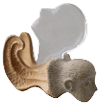PPP Curriculum
firstfirstAIMS OF THE CURRICULUM OF PPP (BASICS)
- Anchoring of findings of pre- and perinatal psychology and psychotherapy within the PPP therapy method.
- Confrontation with the scientific basic research of brain, neurosciences and psychotraumatology regarding pre- and perinatal in order to deepen the contrahension towards the subject and methodology.
The participants are able to realise the basics of pre- and perinatal development, as a foundation of main ideas and concepts of the PPP method.
They have basic knowledge about methods of introspection/states of regression useful for perception of early (pre- and perinatal) experiences.
In the second part of the curriculum a methodic deepening will be additionally offered. Psychotherapeutic Self Experience (own therapy) is highly recommended.
CONDITIONS OF PARTICIPATION
The curriculum of PPP is directed at educated psychotherapists.
VOLUME AND STRUCTURE
The program consists of six modules:
Module 2: Psychoanalytical and relational aspects (prenatal attachement theory)
Module 3: Body therapy aspects
Module 4: Visualisation and art therapy
Module 5: Process oriented trauma work
Module 6: Practice of PPP method: individual and group work
Modul 1: Introduction seminar[+]
|
Pre- and Perinatal oriented Psychotherapy- an integrative method based on attachment Aims
Contents
The participants are confidencial with relevant keywords and main concepts, f.e. prenatal unconsciousness, primary resistance, trauma of existential change, they are capable of deepend understanding of the subject (matter) of prenatal psychological theory regarding the psychotherapeutic process. |
Module 2: Psychoanalytical and relational aspects of PPP[+]
|
Contents
|
Module 3: Body therapy aspects in PPP[+]
|
Contents
|
Module 4: Visualisation and art therapy within the PPP[+]
|
Contents
|
Module 5: Techniques of introspection – process oriented trauma therapy within the PPP[+]
|
Contents
|
Module 6: Practice: Individual and group work within the PPP[+]
|
Contents
|
Description of the method: integrative analytical, attachment as a basic concept
THEORY
Basic concept: Bipolar Self (Jakel 2000)
It shows the prenatal attachment influencing forms of relatedness in its progressive and defensive function (Essential and Interpersonal Bonding).
The early relational trauma will be shown as a lack of continuity leading to deepest splitting processes. They can be expressed and transformed by the power of symbolizing on different levels of perception.
Hypothesis
Human personality includes the very state of primary narcissism as prenatal life quality. Thus there is no need to cause regressive states of body and mind, but to work on early attachment moods. The closed primary narcissistic state is probably caused by traumatic prenatal or/and perinatal experiences and its defensive function is rejection of object relations (relatedness) in order to protect the wholeness of the Self. Therefore the aim is to change this isolated existential stage by creating healing relatedness within the therapeutic relationship of prenatal bonding quality. The analytic setting seems to fulfill these criteria's.
Thesis
The healing relatedness will be established by symbolizing of relational trauma and not by forcing of regressive experiences. This process takes place within the transference- and counter transference relation, where prenatal or perinatal experiences may be reactivated too.
PRACTICE
Methodological approach
analytical (setting and interpretation), body as a symbolic language of experience, visualization, art therapy (intuitive drawing or writing)
Therapy/treatment
integrative-analytical, attachment-oriented
Modified analytic longtime-therapy focusing confrontation with primary resistance stages (Urwiderstand). The therapeutic situation is like womblike state (Rank, Graber). The setting has holding function of creating the continuity of attachment, which should release (cause) the psychic birth (separation from isolated womblike state). Introspective approach by free association (language and visualization)
Workshops
Introspection of inner experiences
- concentration techniques – short time meditation
- Self-perception: body feelings and visualization
- expression: intuitive drawings or writings
Exploration of data
- analysis of inner and outer experience: body language, free associations
- synthesis (by interpretation): aspects of prenatal or perinatal experiences, data survey of documented life history and associated facts

